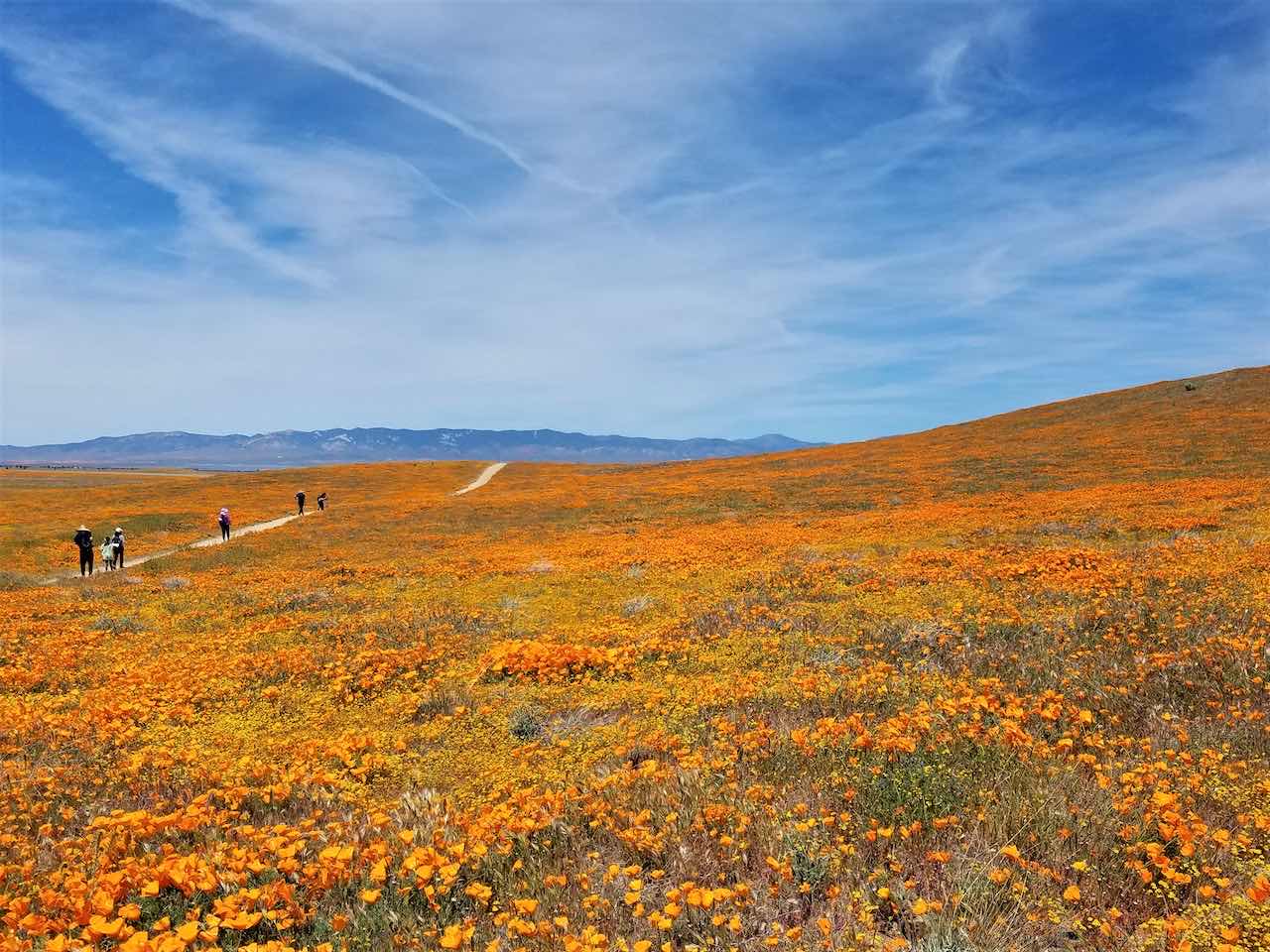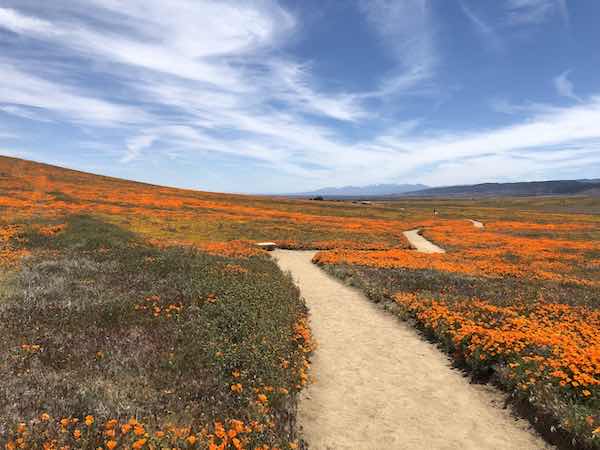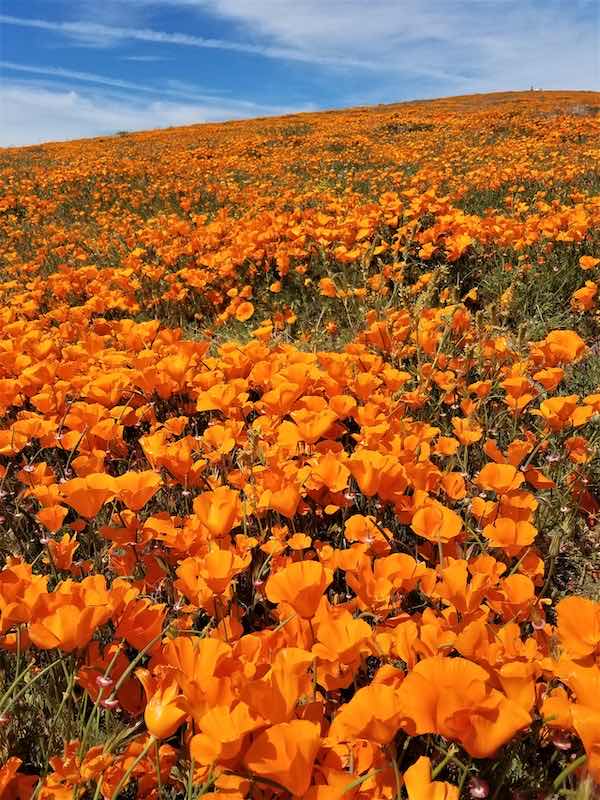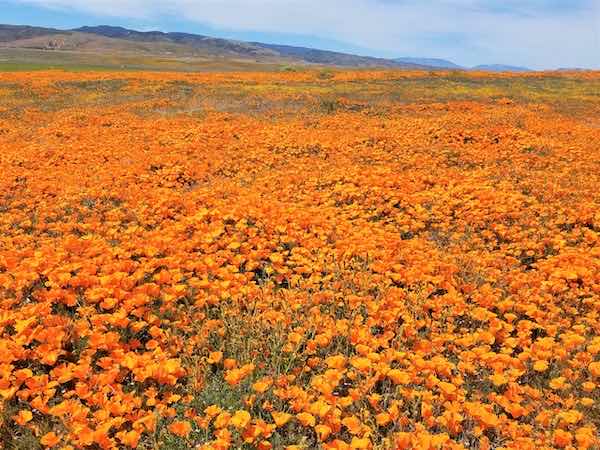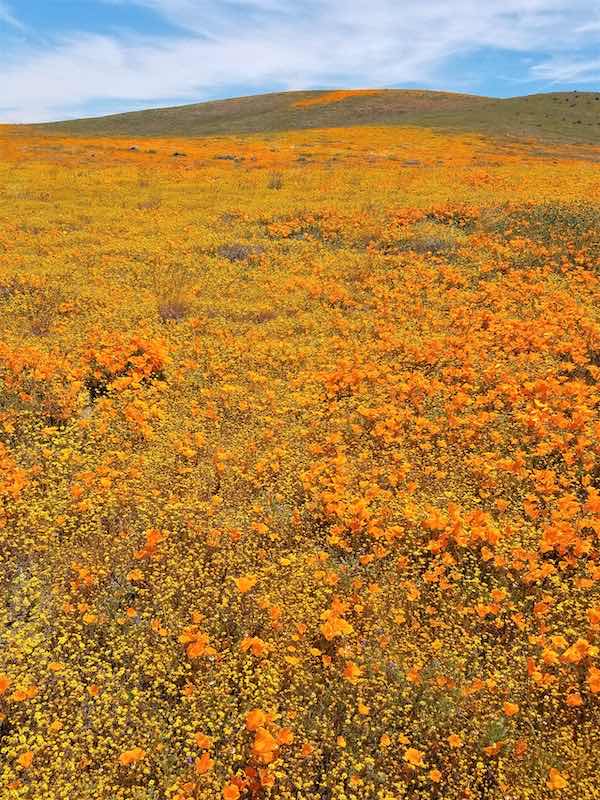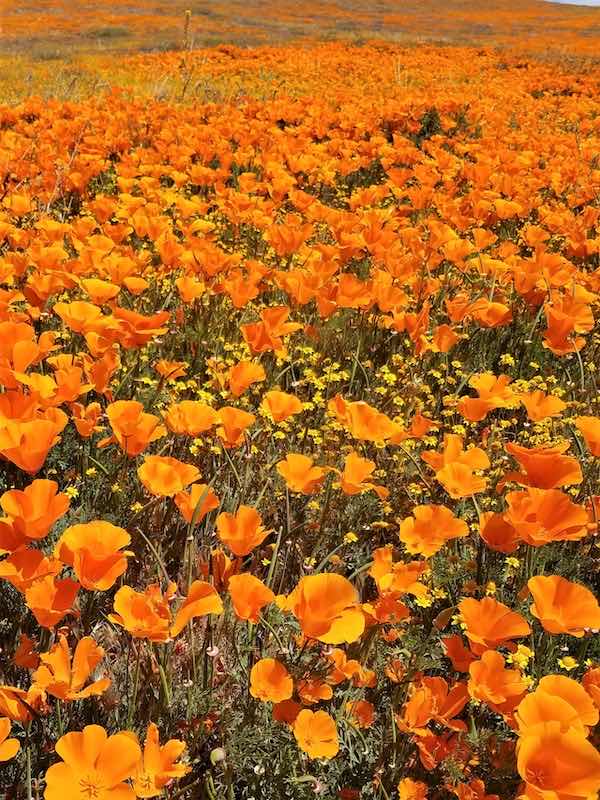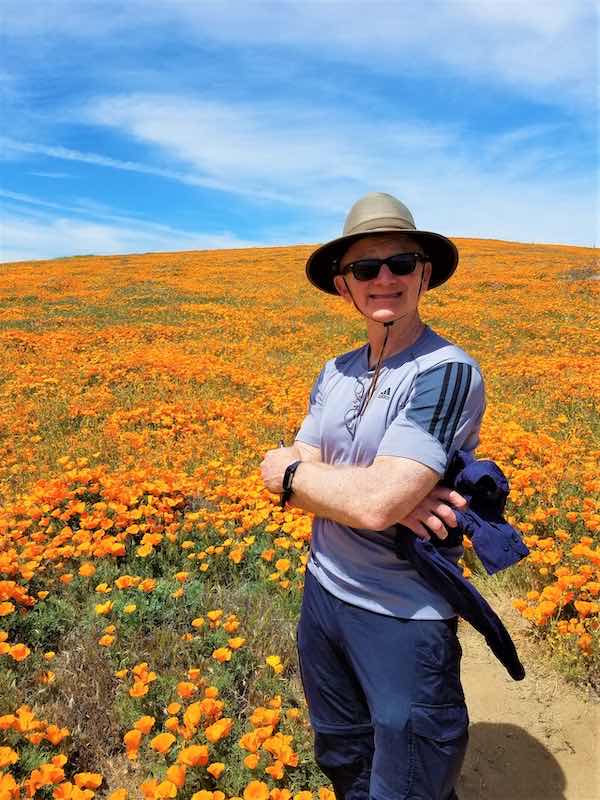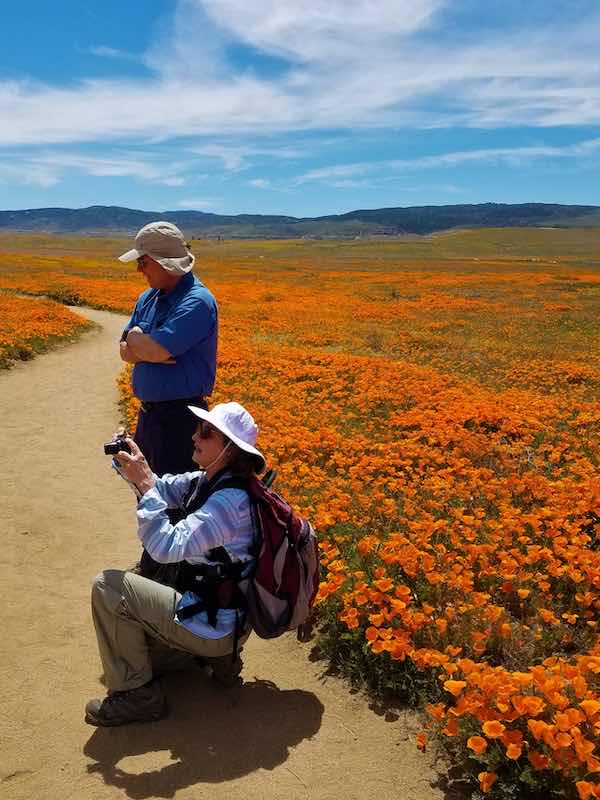
Antelope Valley California Poppy Reserve (SNR)
During the spring, especially when there is a superbloom, this is a place you will not want to miss. The vast, brilliant expanses of California Poppies are truly spectacular, and are frequently described as “mind-blowing.” There are 8 miles of trails, which wind through the poppies and other wildflowers, including goldfields, cream cups, lupine, owl’s clover, and coreopsis. The immersive, Technicolor views are spectacular.
The blooms can happen any time between March and May, so check the Reserve’s Facebook page or call the Hotline: 661-724-1180. Try to go on a warm, sunny day when the poppies are fully open, and ideally on a weekday. There is a shaded picnic table area and lots of benches. Also, the Jane S. Pinheiro Interpretive Center is a great place to visit.
Details
Location
½ mile north of the intersection of 150th St W and Lancaster Road, Lancaster
Managed By
California State Parks
Website(s)
Distance from UCSB
114 miles
How To Get There
Things To Do
Birdwatching, Hiking, Picnicking, Relaxing, Viewing (flowers!, scenic), Walking
Fun Facts
This extraordinary Poppy Preserve exists because of Jane Pinheiro and other dedicated citizens. Purchasing the land even involved enthusiastic fundraising from school children (“Pennies for Poppies”). On the information-filled website for the Poppy Reserve Mojave Desert Interpretive Association, there are many wonderful links describing the Reserve’s inspirational history, including "Story of a Dream" and "The Great Poppy Lady."
In 1903, the California Poppy was officially designated the State flower.
Other Information
This destination has accessible features; to review, click here.
Also, check out the Live Poppy Cam.
Nearby Public Lands Worth Visiting
After visiting the Poppy Reserve, consider going 7 miles west to the Arthur B. Ripley Desert Woodland State Park, which features a protected, special natural area of California juniper trees and Joshua trees. Before ranching, farming, and other activities, this representative woodland habitat once thrived throughout the Antelope Valley.
© Great Public Land Destinations. All Rights Reserved.
Terms of Use
